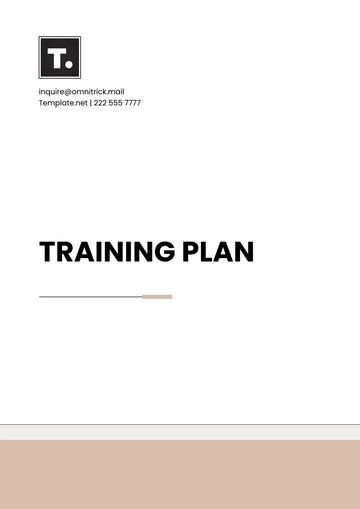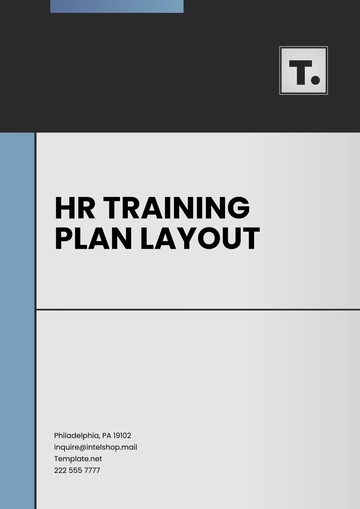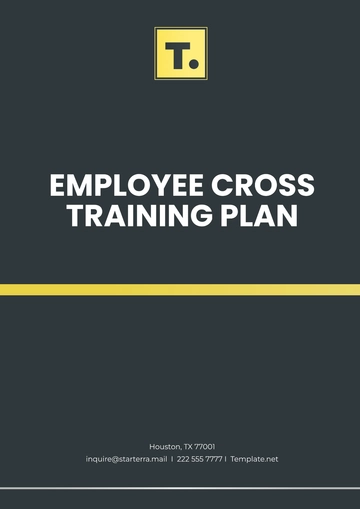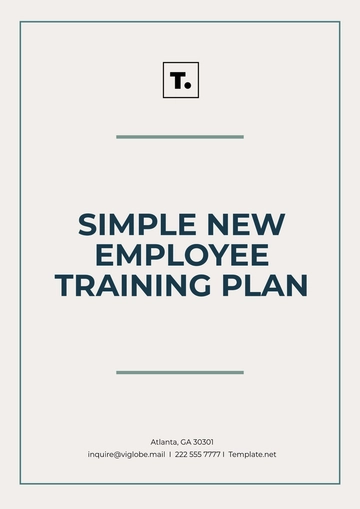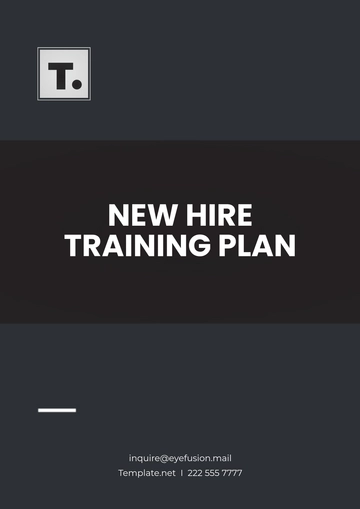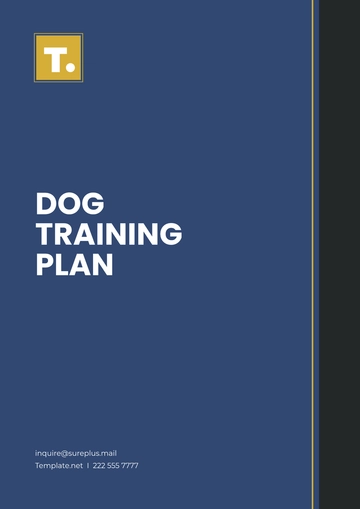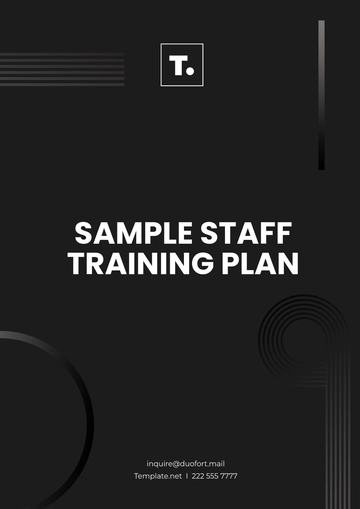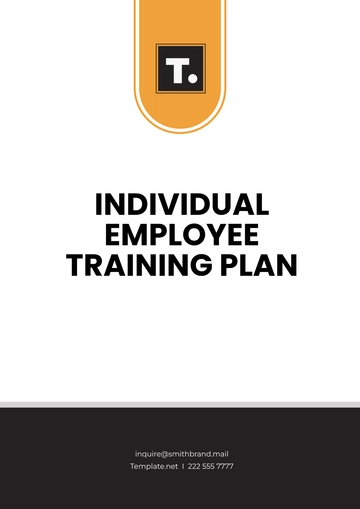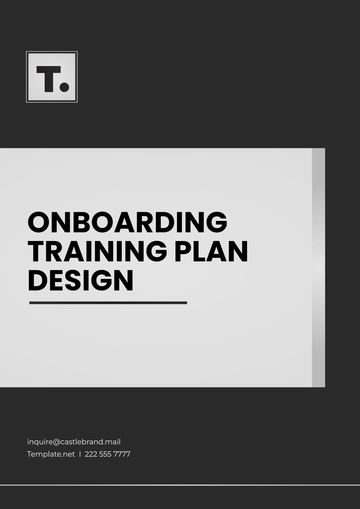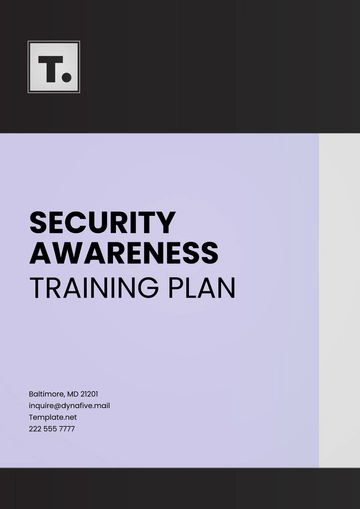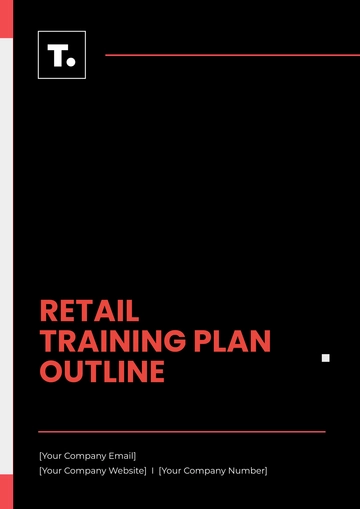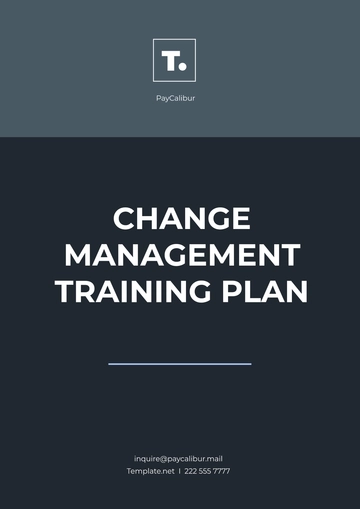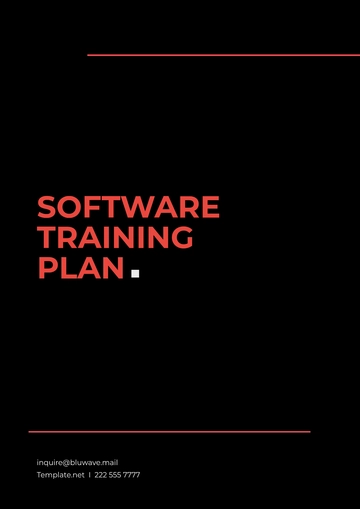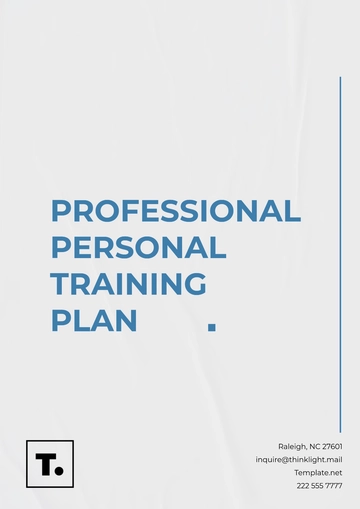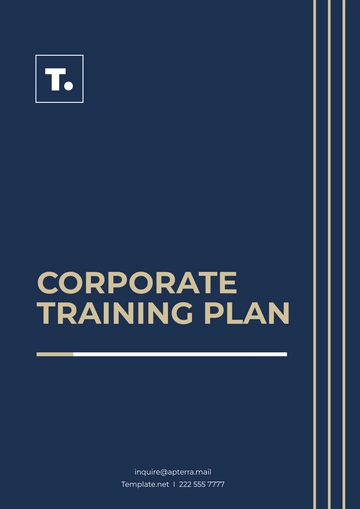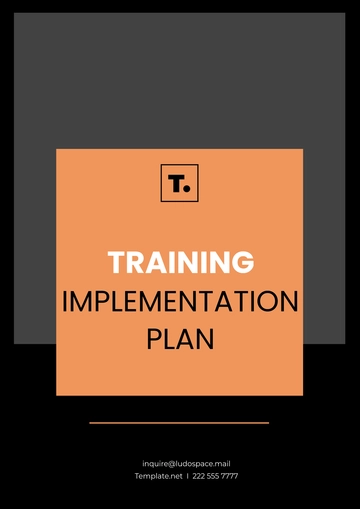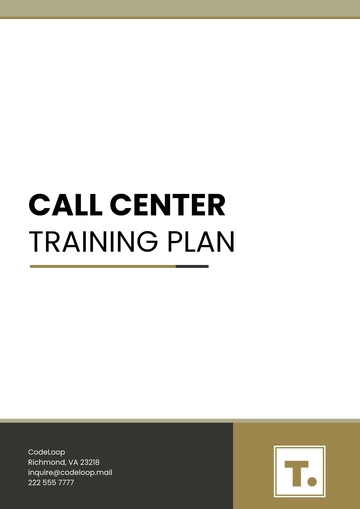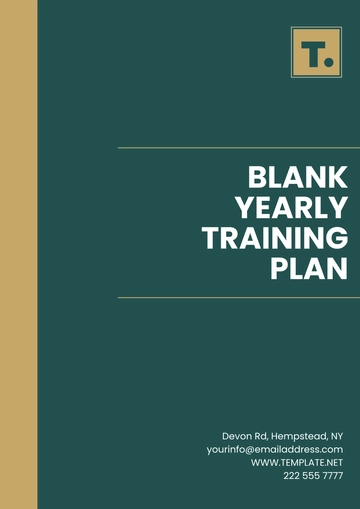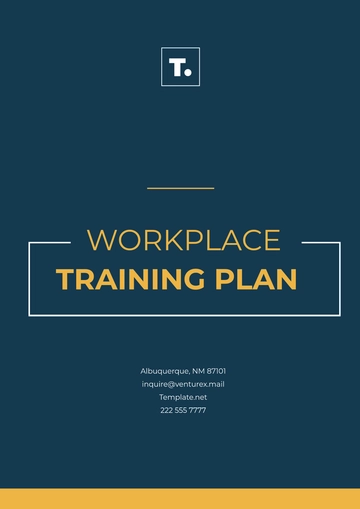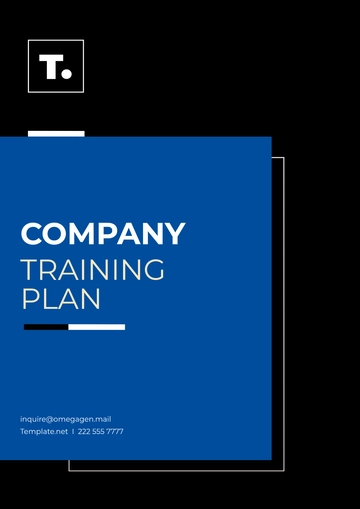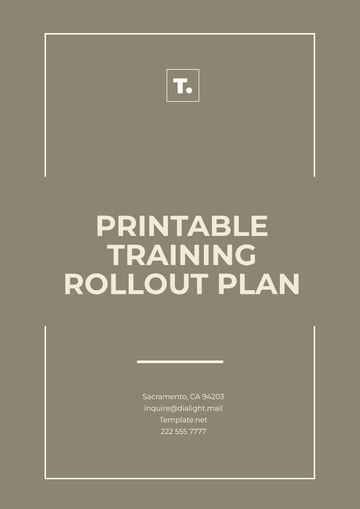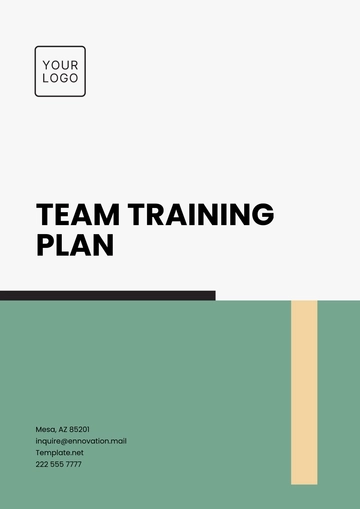Free Monthly Training Plan
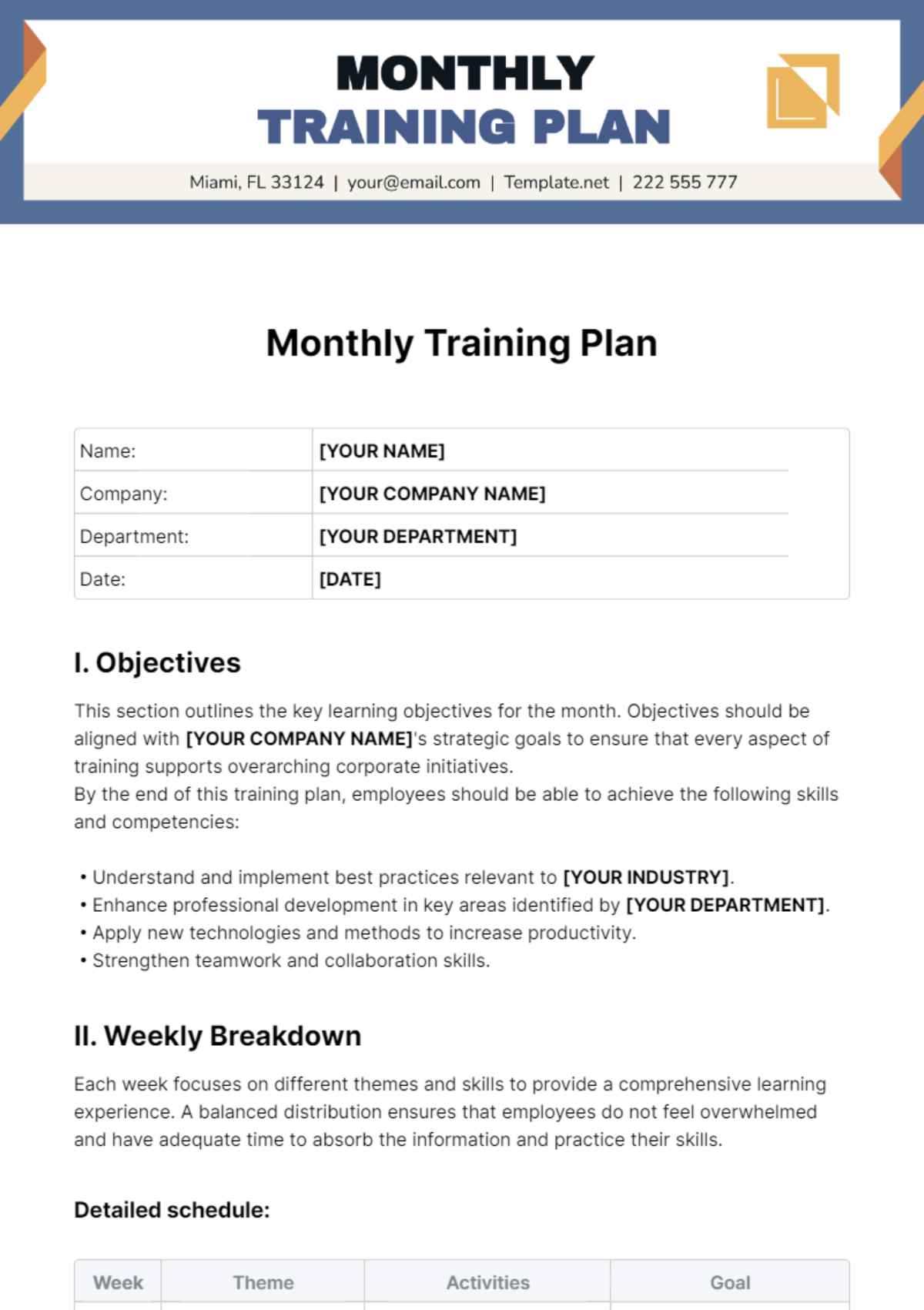
Name: | [YOUR NAME] |
Company: | [YOUR COMPANY NAME] |
Department: | [YOUR DEPARTMENT] |
Date: | [DATE] |
I. Objectives
This section outlines the key learning objectives for the month. Objectives should be aligned with [YOUR COMPANY NAME]'s strategic goals to ensure that every aspect of training supports overarching corporate initiatives.
By the end of this training plan, employees should be able to achieve the following skills and competencies:
Understand and implement best practices relevant to [YOUR INDUSTRY].
Enhance professional development in key areas identified by [YOUR DEPARTMENT].
Apply new technologies and methods to increase productivity.
Strengthen teamwork and collaboration skills.
II. Weekly Breakdown
Each week focuses on different themes and skills to provide a comprehensive learning experience. A balanced distribution ensures that employees do not feel overwhelmed and have adequate time to absorb the information and practice their skills.
Detailed schedule:
Week | Theme | Activities | Goal |
|---|---|---|---|
Week 1 | Introduction to [TECHNOLOGY] | Webinars, hands-on tasks | Basic understanding and implementation |
Week 2 | Advanced Techniques in [SKILL] | Advanced workshops, group projects | Deep dive into more complex concepts |
Week 3 | Application and Integration | Case studies, real-world scenario simulations | Practical application in workplace scenarios |
Week 4 | Review and Evaluation | Feedback sessions, assessments | Assess learning and retention |
III. Resources Required
To ensure that the training sessions are effective and conducive to learning, specific resources must be prepared in advance. Availability of these resources will enable smoother execution of training operations.
Resources checklist includes:
Access to proprietary software [SOFTWARE].
Educational materials such as eBooks, articles, and videos related to [TECHNOLOGY].
Physical spaces for in-person training or reliable software for virtual setups.
Support from IT and HR departments to address any logistical needs.
IV. Feedback and Continuous Improvement
This final segment is dedicated to collating feedback from participants and other stakeholders like department heads and training facilitators. Feedback is crucial as it helps in refining the training modules for future sessions.
Methods to gather feedback include:
Anonymous surveys
Group discussions
One-on-one interviews with trainers and trainees
Assessment results from each week to monitor progress
V. Budget and Expenses
Materials:
Allocate funds for purchasing educational materials such as books, eBooks, articles, and videos related to the training topics.
Estimate costs for printing training manuals or handouts if applicable.
Trainers:
Budget for hiring external trainers or allocating internal resources for conducting specialized workshops or sessions.
Include expenses related to trainers' fees, travel, accommodation (if necessary), and any additional honorariums.
Venue Rental:
If training sessions are conducted in physical locations, budget for venue rental fees, catering, and other associated costs.
Consider any equipment or technology rental required for presentations or demonstrations.
Technology:
Allocate funds for accessing proprietary software or online platforms necessary for training purposes.
Include costs for any software licenses, subscriptions, or upgrades needed to facilitate training activities.
Miscellaneous:
Anticipate miscellaneous expenses such as administrative fees, IT support, and unforeseen costs that may arise during the training period.
VI. Training Evaluation
Key Performance Indicators (KPIs):
Define KPIs such as skill improvement, knowledge retention, and application of learning in the workplace.
Establish metrics to measure the effectiveness of the training plan in achieving its objectives.
Participant Feedback:
Collect feedback from participants through surveys, focus group discussions, or one-on-one interviews.
Analyze qualitative feedback to understand participants' perspectives on the relevance, usefulness, and engagement of the training sessions.
Assessment Results:
Review assessment results from each week to evaluate participant progress and identify areas of strength and weakness.
Compare pre-training and post-training assessments to gauge the impact of the training on individual performance.
Identify Areas for Improvement:
Identify any shortcomings or challenges encountered during the training plan implementation.
Consider suggestions and recommendations provided by participants and trainers for enhancing future training initiatives.
Continuous Improvement:
Use evaluation findings to refine and improve future training programs.
Incorporate lessons learned into the development of subsequent training plans to ensure continuous enhancement of employee skills and knowledge.
VII. Conclusion
This training plan is crucial for enhancing employee skills and driving our company's objectives forward. We're grateful to all involved in its planning and execution. Together, we're investing in our workforce's growth and success at [YOUR COMPANY NAME].
- 100% Customizable, free editor
- Access 1 Million+ Templates, photo’s & graphics
- Download or share as a template
- Click and replace photos, graphics, text, backgrounds
- Resize, crop, AI write & more
- Access advanced editor
Discover the ultimate tool for fitness enthusiasts with the Monthly Training Plan Template from Template.net. Crafted for precision and flexibility, it's fully editable and customizable, ensuring tailored workouts. Seamlessly modify with our Ai Editor Tool. Elevate your fitness journey today with this versatile template.
You may also like
- Finance Plan
- Construction Plan
- Sales Plan
- Development Plan
- Career Plan
- Budget Plan
- HR Plan
- Education Plan
- Transition Plan
- Work Plan
- Training Plan
- Communication Plan
- Operation Plan
- Health And Safety Plan
- Strategy Plan
- Professional Development Plan
- Advertising Plan
- Risk Management Plan
- Restaurant Plan
- School Plan
- Nursing Home Patient Care Plan
- Nursing Care Plan
- Plan Event
- Startup Plan
- Social Media Plan
- Staffing Plan
- Annual Plan
- Content Plan
- Payment Plan
- Implementation Plan
- Hotel Plan
- Workout Plan
- Accounting Plan
- Campaign Plan
- Essay Plan
- 30 60 90 Day Plan
- Research Plan
- Recruitment Plan
- 90 Day Plan
- Quarterly Plan
- Emergency Plan
- 5 Year Plan
- Gym Plan
- Personal Plan
- IT and Software Plan
- Treatment Plan
- Real Estate Plan
- Law Firm Plan
- Healthcare Plan
- Improvement Plan
- Media Plan
- 5 Year Business Plan
- Learning Plan
- Marketing Campaign Plan
- Travel Agency Plan
- Cleaning Services Plan
- Interior Design Plan
- Performance Plan
- PR Plan
- Birth Plan
- Life Plan
- SEO Plan
- Disaster Recovery Plan
- Continuity Plan
- Launch Plan
- Legal Plan
- Behavior Plan
- Performance Improvement Plan
- Salon Plan
- Security Plan
- Security Management Plan
- Employee Development Plan
- Quality Plan
- Service Improvement Plan
- Growth Plan
- Incident Response Plan
- Basketball Plan
- Emergency Action Plan
- Product Launch Plan
- Spa Plan
- Employee Training Plan
- Data Analysis Plan
- Employee Action Plan
- Territory Plan
- Audit Plan
- Classroom Plan
- Activity Plan
- Parenting Plan
- Care Plan
- Project Execution Plan
- Exercise Plan
- Internship Plan
- Software Development Plan
- Continuous Improvement Plan
- Leave Plan
- 90 Day Sales Plan
- Advertising Agency Plan
- Employee Transition Plan
- Smart Action Plan
- Workplace Safety Plan
- Behavior Change Plan
- Contingency Plan
- Continuity of Operations Plan
- Health Plan
- Quality Control Plan
- Self Plan
- Sports Development Plan
- Change Management Plan
- Ecommerce Plan
- Personal Financial Plan
- Process Improvement Plan
- 30-60-90 Day Sales Plan
- Crisis Management Plan
- Engagement Plan
- Execution Plan
- Pandemic Plan
- Quality Assurance Plan
- Service Continuity Plan
- Agile Project Plan
- Fundraising Plan
- Job Transition Plan
- Asset Maintenance Plan
- Maintenance Plan
- Software Test Plan
- Staff Training and Development Plan
- 3 Year Plan
- Brand Activation Plan
- Release Plan
- Resource Plan
- Risk Mitigation Plan
- Teacher Plan
- 30 60 90 Day Plan for New Manager
- Food Safety Plan
- Food Truck Plan
- Hiring Plan
- Quality Management Plan
- Wellness Plan
- Behavior Intervention Plan
- Bonus Plan
- Investment Plan
- Maternity Leave Plan
- Pandemic Response Plan
- Succession Planning
- Coaching Plan
- Configuration Management Plan
- Remote Work Plan
- Self Care Plan
- Teaching Plan
- 100-Day Plan
- HACCP Plan
- Student Plan
- Sustainability Plan
- 30 60 90 Day Plan for Interview
- Access Plan
- Site Specific Safety Plan
